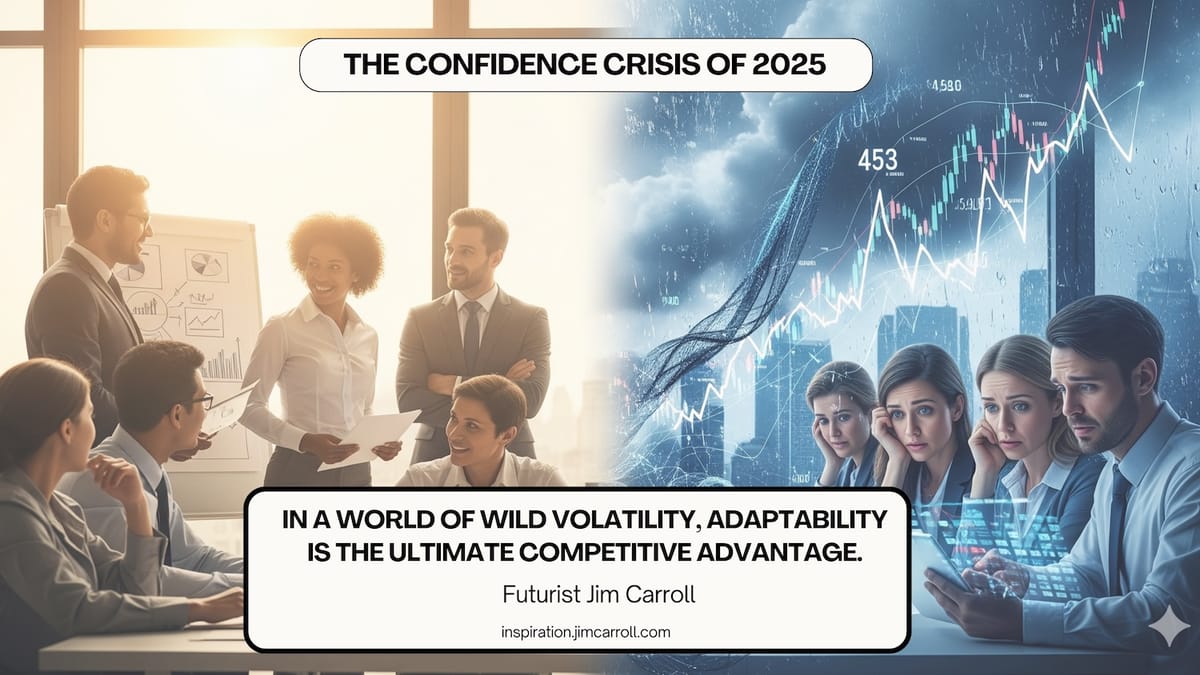"The Confidence Crisis of 2025: In a world of wild volatility, adaptability is the ultimate competitive advantage." - Futurist Jim Carroll
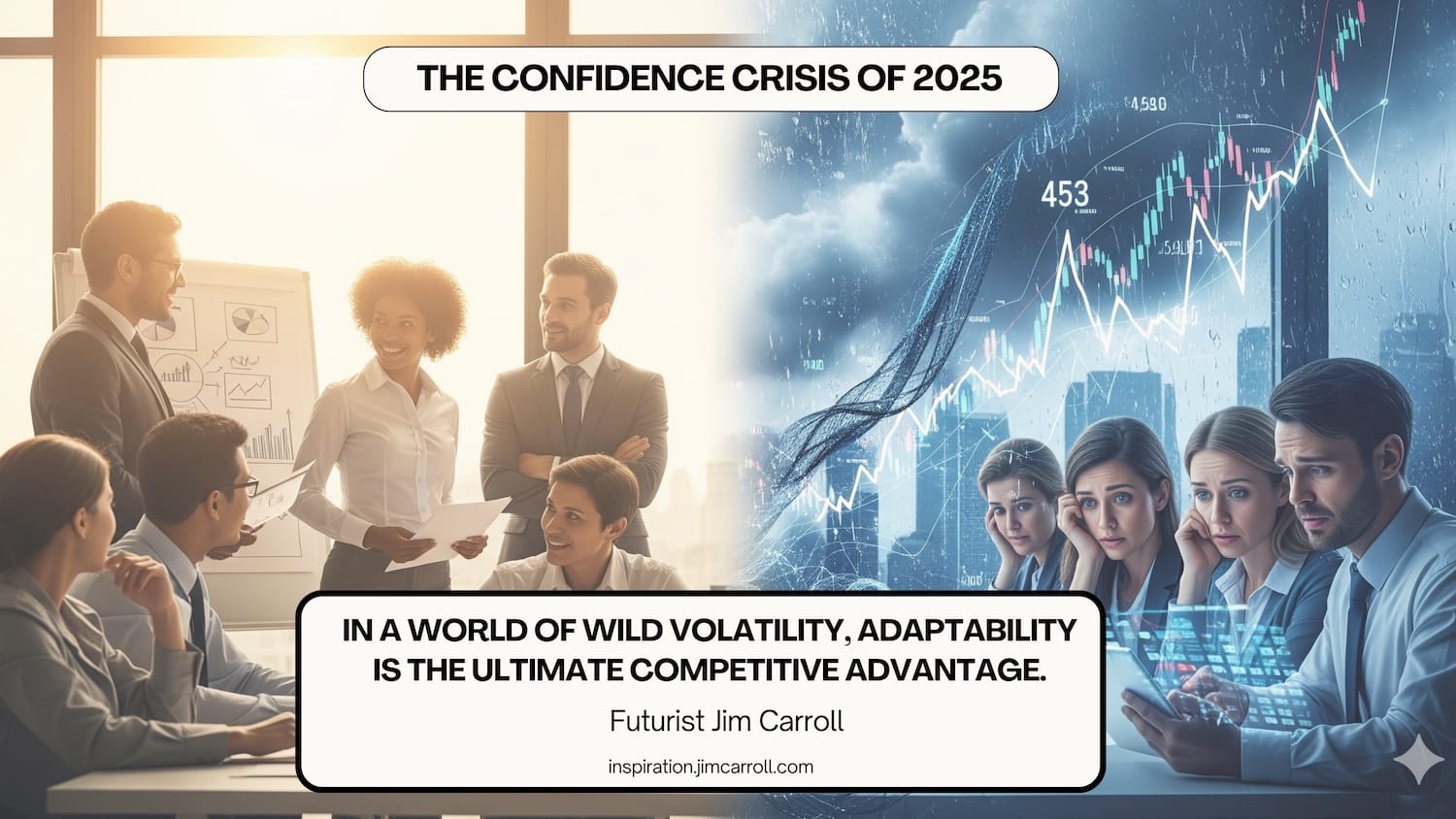
One of my favorite newsletters among the flood of content out there is Korn Ferry's This Week in Leadership - you can sign up here. It's a regular short overview of key trends with links to longer articles, and I often find nuggets of powerful insight in there.
One of the most recent reports on the issue of 'risky business' with a summary of a survey from 250 global CEOs and Board directors about the issue of risk.
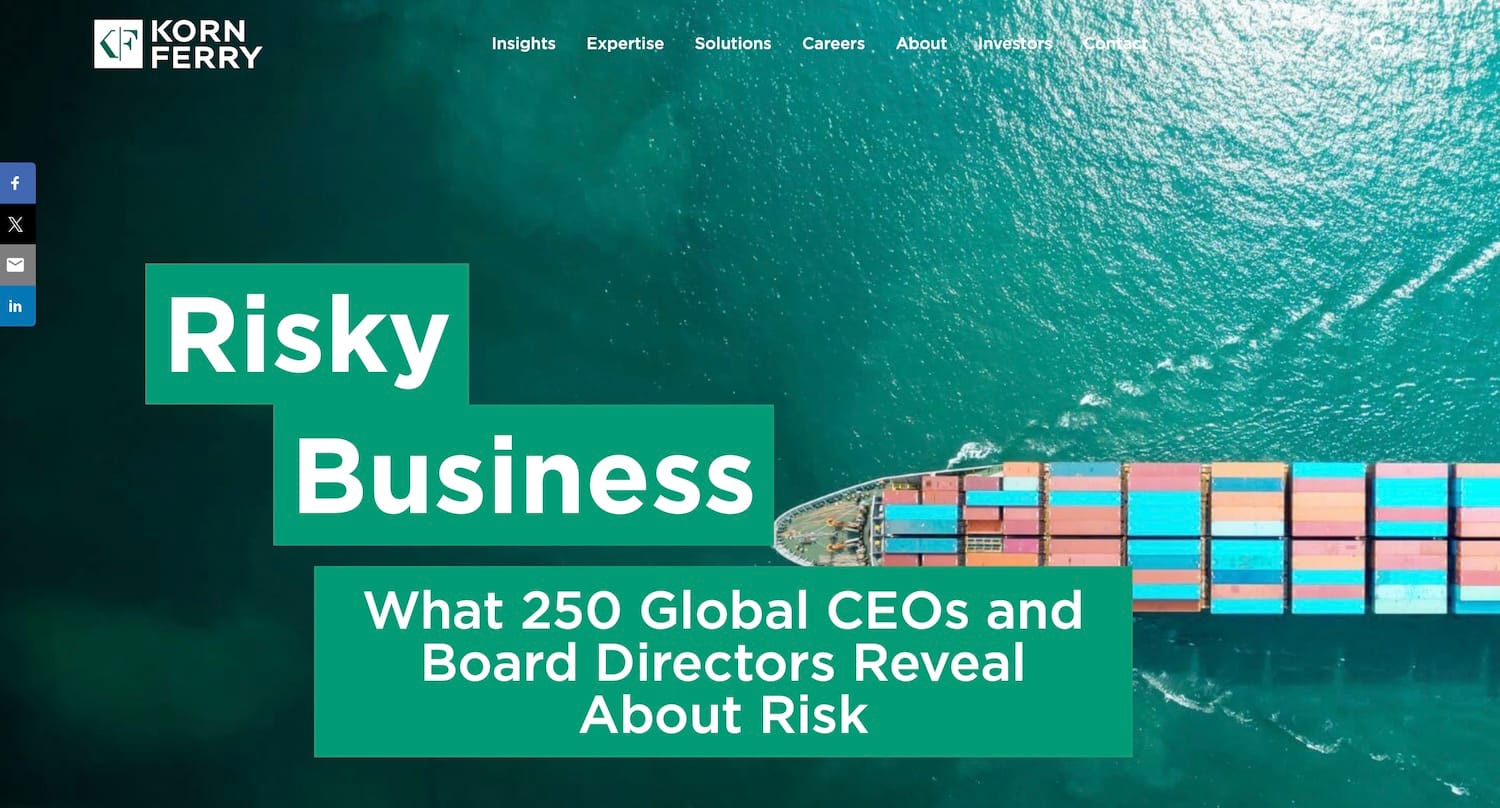
It's a powerful overview of the state of mind in the C-suite today, but I asked Google Gemini to summarize the findings in the newsletter.
A recent Korn Ferry survey of 250 CEOs and board members, titled "Risky Business," reveals that a significant majority (63%) of organizations have experienced a rise in overall risk exposure in the last year, with little expectation of this trend slowing down. The survey highlights a widespread lack of confidence among leaders in their ability to manage these risks. Here are the key takeaways from the report:
Confidence Crisis: A staggering low percentage of leaders feel prepared to handle major threats. Only 11% are "fully confident" in their overall risk management capacity. This lack of confidence extends to specific areas, with even lower figures for geopolitical risk (7%), economic volatility (9%), AI and climate risks (fewer than 10%), and talent and skills management (4%). Study recent literature from June 2025 on, to determine if this has become a widespread problem
This caught my interest!
I took things one step further and used Gemini to do a broad survey of what leadership is worried about today. And the answer is, obviously, a lot! I'll tackle the issue of AI, climate risks, and skills management in later posts, but I wanted to take on the issue of volatility and uncertainty. That led to my PDF report: The Confidence Crisis: Why Leaders Are Losing Faith in the Future (And What to Do About It). Grab it here.
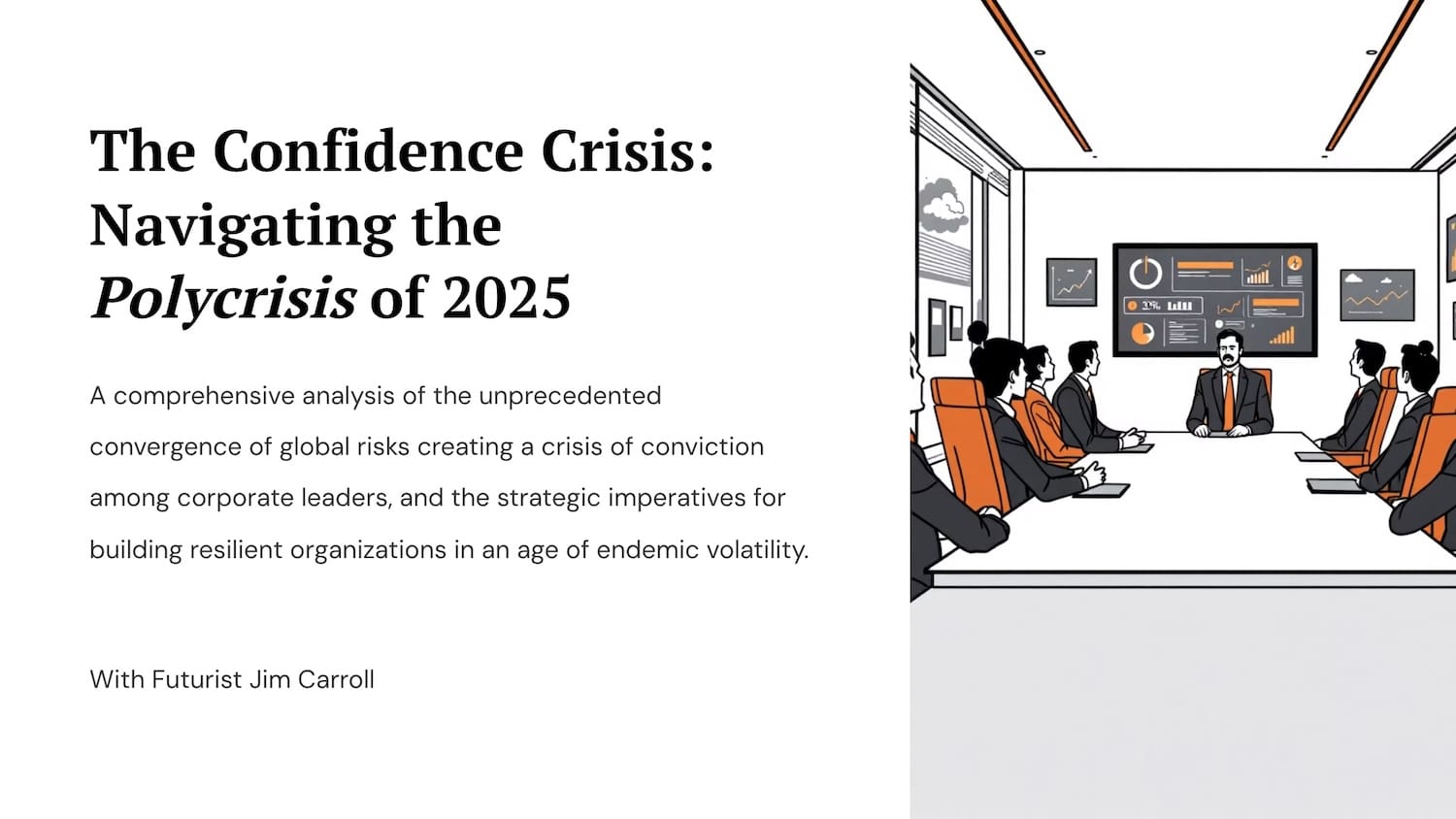
What's up?
There's a massive confidence crisis haunting corporate boardrooms in 2025. CEOs and senior executives are experiencing a profound loss of faith in something that they've always previously had confidence in: the predictability of the world around them.
I could have told you that, but this report provides powerful insight into his reality - the confidence crisis of 2025—a rational response to an increasingly irrational world.
The data tells a stark story. According to recent research, 63% of leaders report that overall risk to their companies has risen dramatically in the past year. (I wonder why!) Only 11% feel fully confident in their organization's risk management capacity. When it comes to economic volatility, a mere 9% express full confidence in their ability to navigate the turbulence ahead. Most telling of all, just 7% of leaders feel prepared for geopolitical risk.
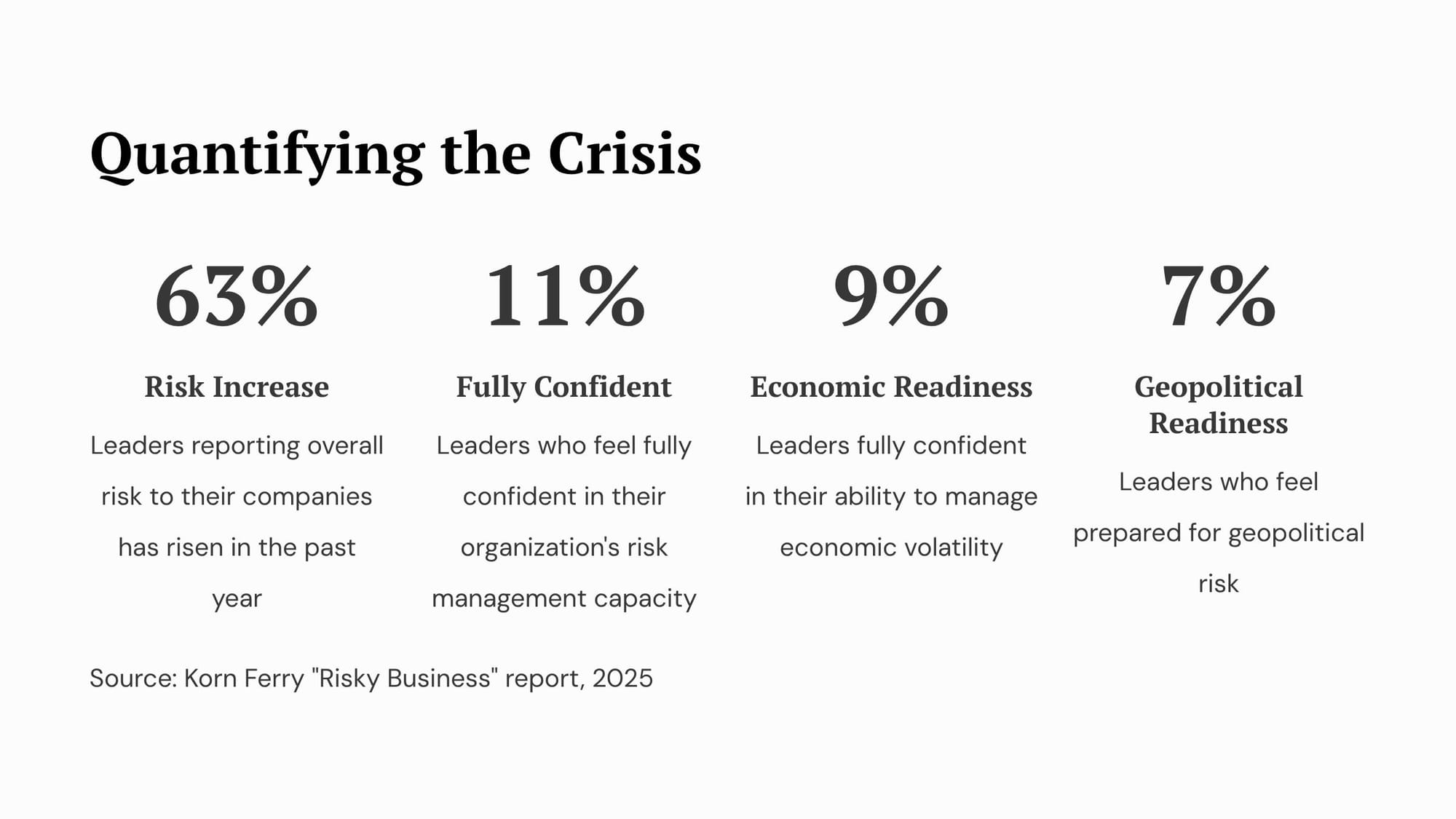
Perhaps the most revealing finding is that the most seasoned leaders—those with 20+ years in senior roles—report among the lowest levels of confidence. This isn't fear talking; it's wisdom. These veterans recognize that we've entered uncharted waters where their carefully honed playbooks may no longer apply. What does it mean? The nature of risk in 2025 is fundamentally different from anything we've encountered before. (The fact that those who have successfully navigated previous periods of economic volatility don't really know what to do about this one kind of freaks me out!)
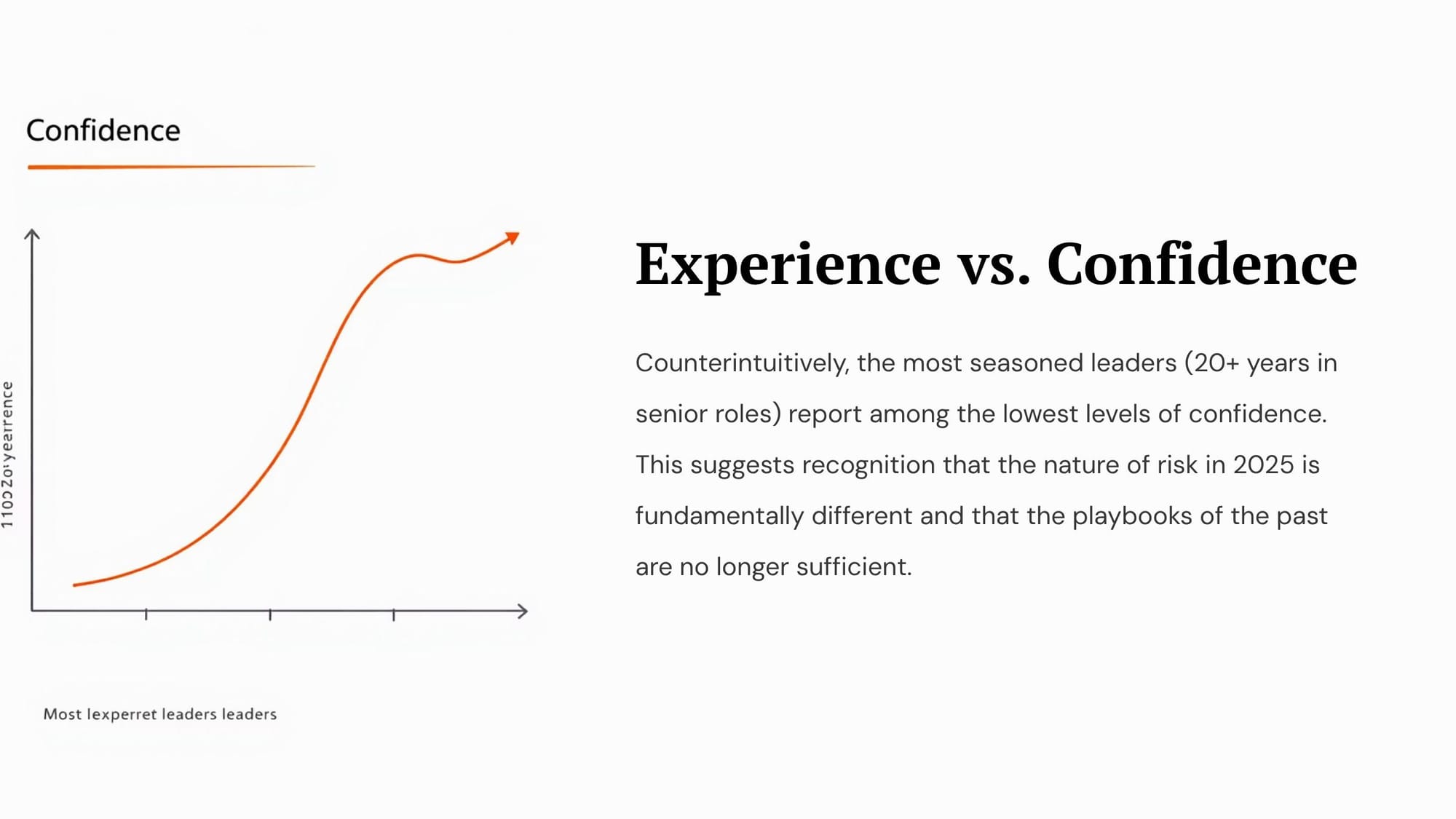
There seems to be a phrase for this weird new era we are in - it's a polycrisis. That's a massive convergence of interconnected global risks that no longer operate in isolation.
Unlike the discrete challenges of the past, today's risks amplify and accelerate one another, creating a complex, fast-moving environment that invalidates traditional management approaches. Consider the interconnected web: geopolitical tensions trigger supply chain disruptions, which fuel economic volatility, which drives regulatory changes, which cascade into new operational challenges. Each crisis feeds the others, creating what the World Economic Forum describes as the "simultaneous deterioration" of multiple factors.
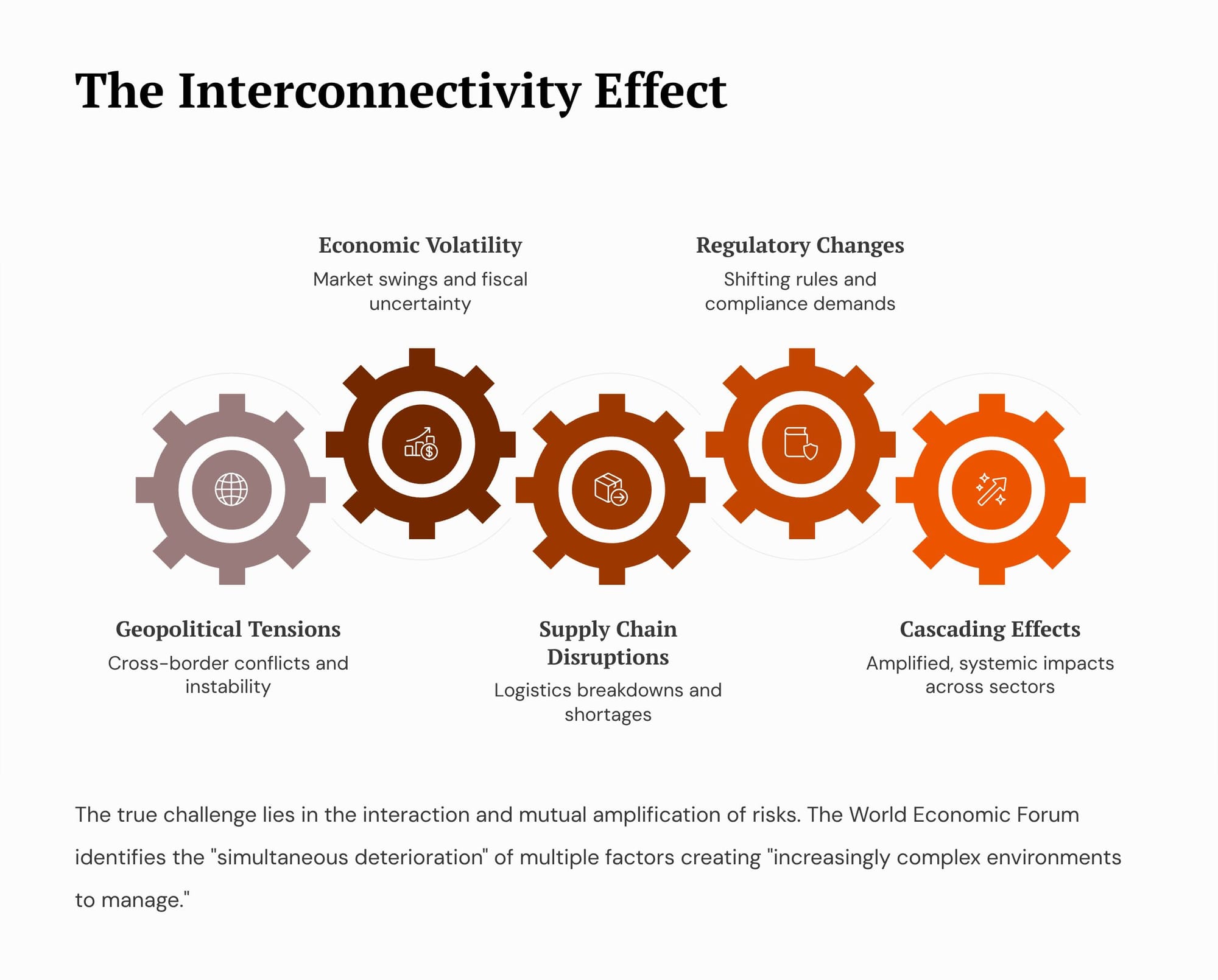
I guess it's all about making volatility great again. Insert LOL!
In that context, traditional risk management fails because it was built for a world of siloed, predictable threats. The polycrisis demands something entirely different.
But it's not just the polycrisis - it's the speed with which it is occurring. Strategic timelines are compressing, business model lifespans are shortening, and the luxury of long-term planning is evaporating. A remarkable 42% of CEOs now believe their company won't be economically viable in a decade if it continues on its current path. The economic headwinds are real, folks.
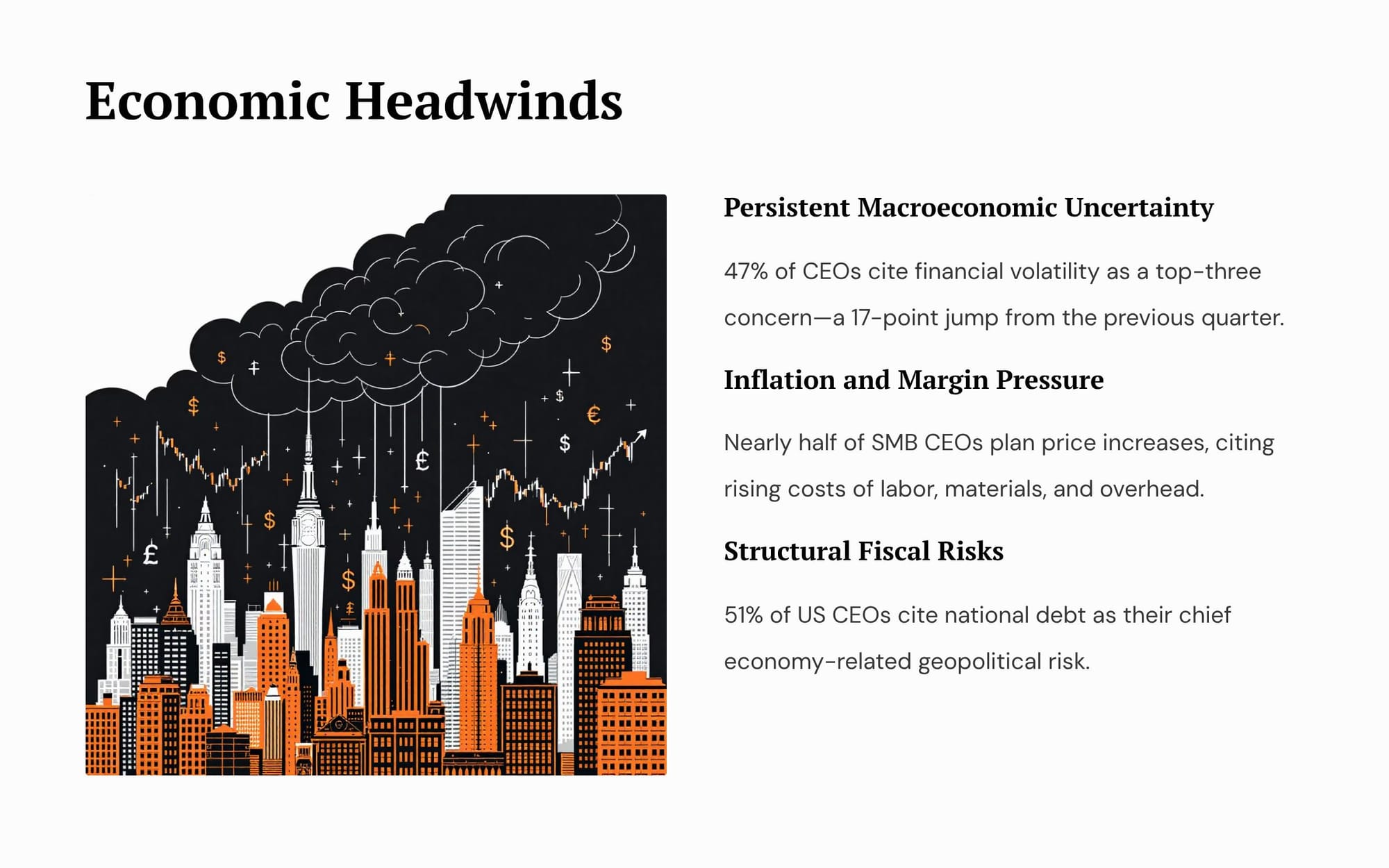
Yet the dominant corporate response has been a defensive retreat into caution. Half of all CEOs are actively reducing their risk appetite, 77% are prioritizing cost efficiency above all else, and 71% of US leaders are restructuring supply chains to minimize disruption risk. This creates what I call the "agility gap"—the dangerous disconnect between the need for greater adaptability and the reality of organizational inertia - precisely the wrong response that I examine in my Dancing in the Rain book.
The fundamental challenge facing leaders today is simple: any strategy based on accurately forecasting an unpredictable future is destined to fail. The solution isn't better prediction—it's superior adaptive capacity. So how do you adapt? By knowing that the leaders who will thrive in this environment share several key characteristics:
- They've shifted from trying to predict the future to building organizations that can thrive in any future. They measure success not just by traditional metrics, but by adaptive capacity: decision velocity, resource fluidity, learning rate, and shock absorption.
- They understand that confidence will return not when the external world becomes more predictable, but when they've built organizations with superior adaptive capacity to survive and thrive regardless of what comes next.
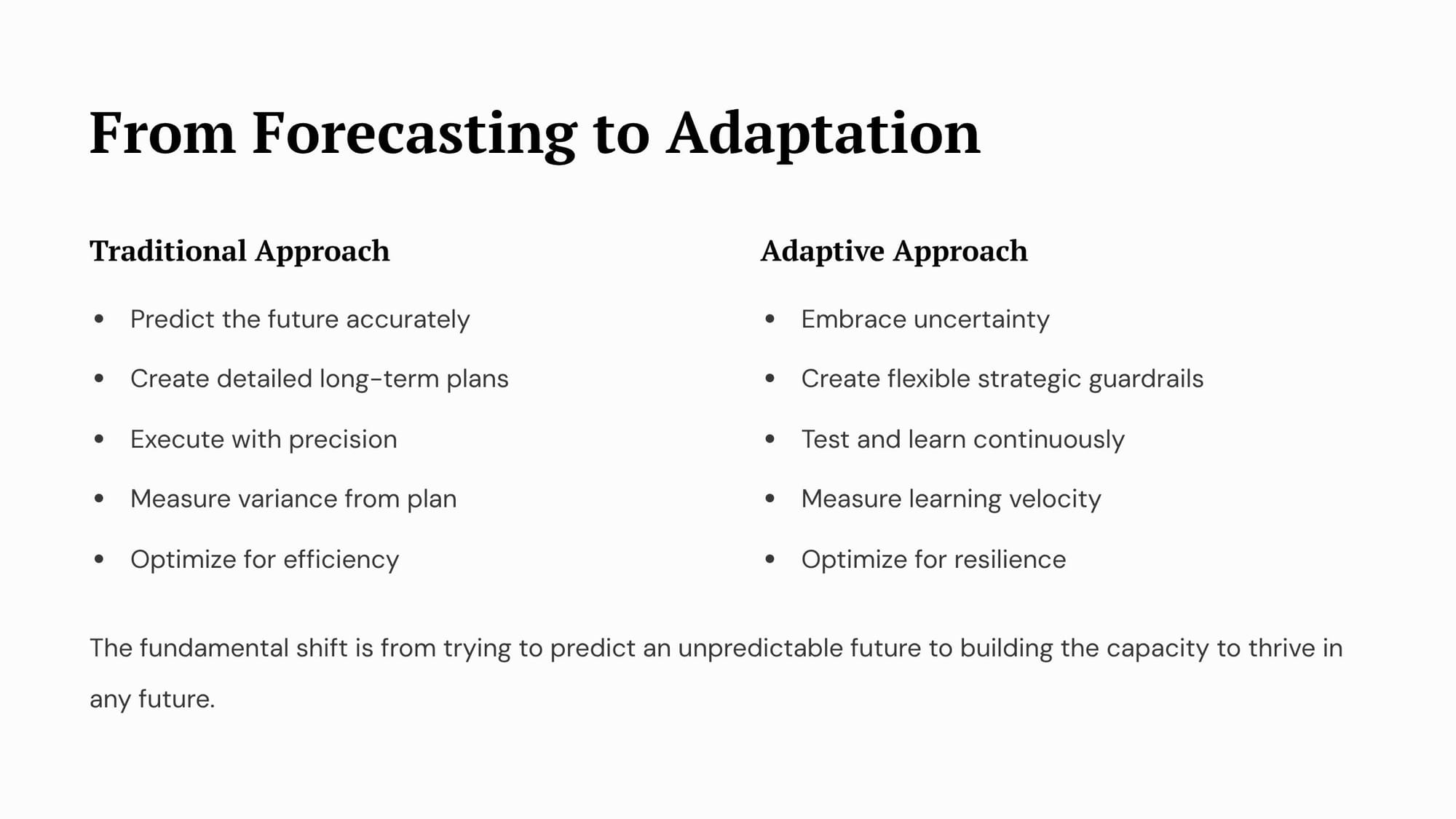
The confidence crisis of 2025 represents both a challenge and an opportunity. Organizations that merely hunker down will survive the immediate turbulence but risk long-term irrelevance. Those that embrace the polycrisis as a catalyst for transformation will emerge not just intact, but positioned for unprecedented advantage.
Which is precisely what I explain in my latest book, "Dancing in the Rain: How Bold Leaders Grow Stronger in Stormy Times."
The future belongs to organizations that learn to thrive in uncertainty rather than simply endure it.
The confidence crisis isn't a bug in the system—it's a feature of our new reality. The leaders who recognize this truth and act on it will write the next chapter of business success.
The storm isn't going away.
It's time to learn to dance in the rain.
Futurist Jim Carroll, in his book Dancing in the Rain, accurately predicted the CEO mindset found in the Korn Ferry survey.

